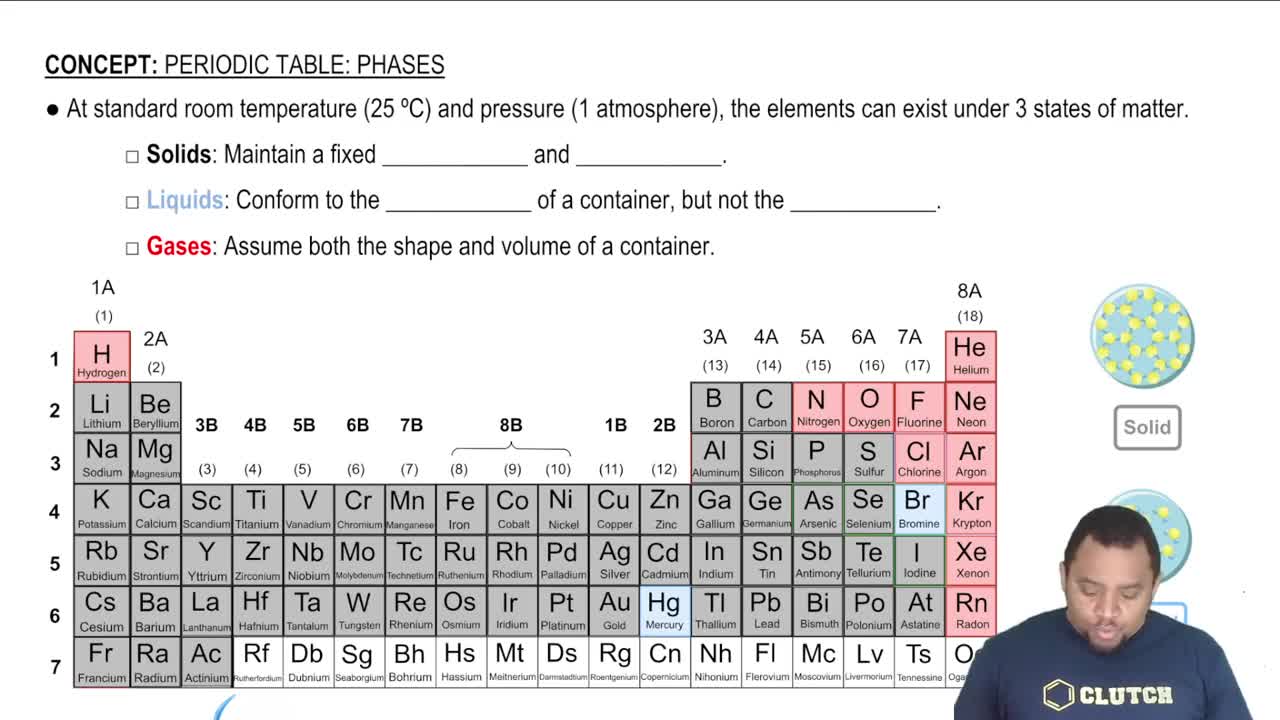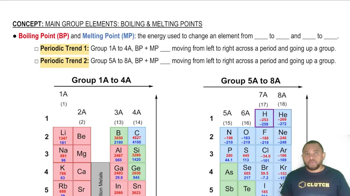Here are the essential concepts you must grasp in order to answer the question correctly.
States of Matter
Matter exists in different states: solid, liquid, and gas, depending on temperature and pressure. At room temperature (approximately 20-25°C), substances can be classified based on their molecular structure and intermolecular forces. Solids have tightly packed particles that vibrate in place, while liquids have more space between particles, allowing them to flow.
Recommended video:
Melting Point
The melting point is the temperature at which a solid becomes a liquid. Compounds with high melting points tend to remain solid at room temperature. Understanding the melting points of various compounds helps in predicting their state at given temperatures, which is crucial for answering questions about their physical properties.
Recommended video:
Boiling Point and Melting Point
Ionic vs. Molecular Compounds
Ionic compounds, such as Na2S, typically form solid structures at room temperature due to strong electrostatic forces between ions. In contrast, molecular compounds like H2O, SO3, and Cl2 may exist as liquids or gases at room temperature, depending on their molecular interactions. Recognizing the differences between these types of compounds aids in determining their physical states.
Recommended video:
 Verified step by step guidance
Verified step by step guidance


